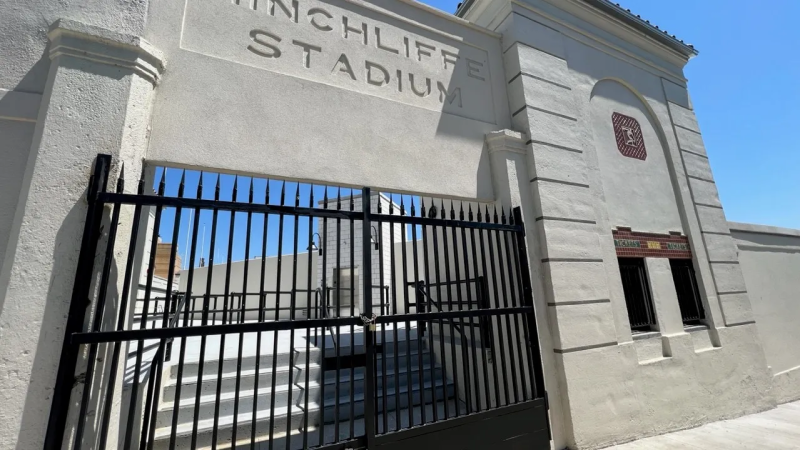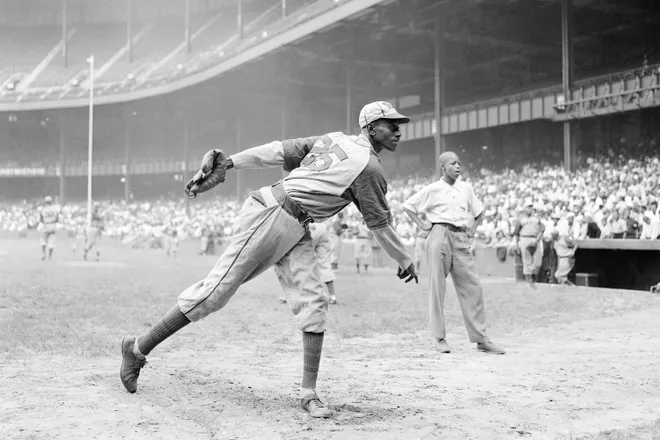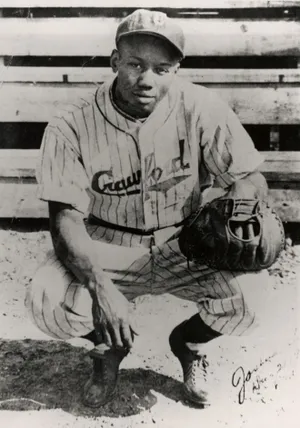Version 1.0: Negro Leagues statistics could soon be entered into MLB record book.

In February for Black History Month, USA TODAY Sports is publishing the series "29 Black Stories in 29 Days." We examine the issues, challenges and opportunities Black athletes and sports officials continue to face after the nation’s reckoning on race following the murder of George Floyd in 2020. This is the fourth installment of the series.
Take a spin through baseball's official records and you won't see Oscar Charleston second to Ty Cobb in career batting average, nor fellow Hall of Famers Jud Wilson, Turkey Stearnes and Mule Suttles among the all-time leaders ... at least not yet.
More than three years after MLB announced it was retroactively elevating the seven Negro Leagues from 1920-1948 to major-league status, Negro Leagues statistics still haven't been integrated into the official record book, but that could change some time this year.
"While it would be imprudent and perhaps counterproductive to set a hard deadline ... we anticipate being able to share with fans a solid representation of an integrated MLB database in 2024," John Thorn, MLB's official historian, told USA TODAY Sports in an email.
"Might this be regarded as Version 1.0? Sure."
HOT STOVE UPDATES: MLB free agency: Ranking and tracking the top players available.
Thorn chairs baseball's Negro Leagues Statistical Review Committee, which has been working since September 2023 to evaluate statistics of 3,400 players from the Seamheads Negro Leagues Database compiled by Agate Type Research.
Sean Gibson, the great grandson of Hall of Famer and Negro Leagues legend Josh Gibson, is among the 15 members of the committee. As surprised as he was by MLB's 2020 Negro Leagues announcement, Gibson was at times frustrated by the seeming lack of progress until he joined the committee last year.
"Hopefully, we’ll have something soon, but the past three years there was no movement," Gibson told USA TODAY Sports. "For me, as well as the other family members (of former Negro Leagues players) I’m representing, we’re excited to see something at least, some kind of progress is being made that will probably make this thing happen."

Protracted negotiations over Negro Leagues database
The Negro Leagues were excluded in 1969 when the Special Committee on Baseball Records identified six official "major leagues" dating to 1876, an omission MLB said was "clearly an error" in its announcement in 2020, the 100th anniversary of the Negro Leagues.
Gary Ashwill, who has compiled the Seamheads database and is owner of Agate Type Research, said talks with MLB about the use of his database began "within a few months of" MLB's announcement.
It wasn't until August of 2023 that the parties agreed on a deal that allowed MLB to access and evaluate the database to determine which statistics will be included in the official record book maintained by the Elias Sports Bureau.
"Things are a lot more complicated than you expect sometimes," Ashwill told USA TODAY Sports. "I had never started a business before, so it was sort of difficult to get everything organized and get everybody on track. When you think about it with this kind of effort, I don’t know of any other sports league that has ever done anything like this in terms of adding to their record book. It’s kind of an unprecedented effort."
Ashwill and MLB would not discuss specifics about the protracted negotiations.
"Our position was to handle the process as thoroughly and appropriately as possible," an MLB spokesperson said in a statement emailed to USA TODAY Sports. "We spent a period of time crafting an agreement that allowed us to use the data on which our decision was based, and we partnered with the researchers behind that effort."
Said Ashwill: "It was just stuff that took a really long time to work out."
Statistical Review Committee evaluating Negro Leagues stats
Like Gibson, Ashwill is on the Statistical Review Committee. Thorn declined to name any specific members but said it’s comprised of statistical experts, historians of Black baseball and other stakeholders, such as the Baseball Hall of Fame, Negro Leagues Baseball Museum and MLB Players Association.
"I give these (historians) a lot of credit," Gibson said, "a lot of credit for doing the research and digging into this history."
With Seamheads’ data in hand, Thorn said the committee will rely on advice from Agate Type Research and baseball play-by-play website Retrosheet, while consulting with Elias, to set minimum standards for seasonal and career marks for batting and pitching records.
Thorn said the 60-game MLB season, necessitated by the COVID pandemic in 2020, as well as those in 1877 and 1878, could serve as useful precedents when evaluating Negro Leagues seasons and statistics.
"We knew from the outset that because of the shortened league seasons − with barnstorming games interjecting into league schedules to provide needed revenue − Negro League career records for 'counting stats,' like homers, wins, strikeouts, steals, and so on were unlikely to topple prior MLB marks," Thorn said. "But even long-term records expressed as averages − batting average, OPS, ERA, and so on − might well topple, depending upon the standards we adopted."
Ashwill said another issue is how to handle independent teams included in the Seamheads database, which he has been compiling in one form or another since about 2000 by going through box scores published in African American newspapers, such as the Chicago Defender and Pittsburgh Courier.
"The thing about the Negro Leagues is that there were various years when – especially due to the Depression and other economic pressures – the leagues sort of fell apart but the clubs continued to exist and played each other," said Ashwill, who said the original goal of his database was not to produce "official" numbers but build the "most comprehensive statistical account of the Negro leagues."
Ashwill acknowledged that some of those independent teams or games against independent teams might not make the cut for the official record book.
"Probably not all of them will be counted as MLB ultimately," Ashwill said. "In the long run, there are questions about do you want to go before 1920. The Negro Leagues didn’t exist but a lot of the teams that made up the Negro Leagues did and they played each other. Do you count them? It’s a complicated question."
Which Negro Leaguers will be among MLB's career leaders?

How the committee answers such question will determine which Negro Leaguers will end up on the lists of baseball’s career statistical leaders, something Sean Gibson became keenly aware of concerning his great grandfather immediately after the 2020 announcement.
"Initially, I think everybody thought Josh Gibson was going to be the new home run king because his home runs on his Hall of Fame plaque states he had 800 home runs," Gibson said. "So, my phone was ringing a lot."
Josh Gibson's plaque in Cooperstown, New York, credits him with hitting "almost 800 home runs in league and independent baseball during his 17-year career."
Seamheads, which is constantly being updated with newly discovered information – "Yes, literally today. Just a few minutes ago," Ashwill said – credits Gibson with hitting 196 home runs in Negro Leagues play.
"Josh Gibson may have hit 800 home runs," Ashwill said "I’d say he probably did hit 800 home runs in his career as a professional, but the vast majority of those were against white semi-pro teams and so on, probably not the kind of thing that most people would think should be counted as major league home runs so he’s going to have 190 or 200 or whatever the final number ends up being."
That’s fine with Sean Gibson.
"Like I tell people, as far as any stats from the Negro Leagues, whether some of Satchel Paige’s games are going to count, it was not Josh Gibson, Satchel Paige, Buck Leonard, Cool Papa Bell – it’s not their fault that (then-Baseball Commissioner) Kenesaw Mountain Landis discriminated against them by not letting them into the majors," Gibson said.
"Josh Gibson didn’t have a choice, and when you don’t have a choice, you make your own history," he added. "He made his own history by hitting 800 home runs. Whether it was independent play, Negro Leagues, Dominican Republic, overseas or whatever, 800 home runs is 800 home runs no matter where you play at."
Of more immediate concern to Sean Gibson than where his great grandfather or Charleston or any Negro Leaguers rank statistically is making sure they get officially included – and soon.
There are only three living former Negro Leagues players – Willie Mays, Bill Greason and Ron Teasley.
"Mr. Teasley is 95 years old and one of my goals is for him to see his name – he played with the New York Cubans in 1948 – my goal here is to see his name in the MLB record book before he passes," Gibson said.
"A lot of these players are – a lot of people in general – seem to get recognized when they’re gone. And we have an opportunity while this man is still living at 95 years old, we have an opportunity for him to actually maybe see this happen before he passes away. So, I’m hoping this will happen."
Disclaimer: The copyright of this article belongs to the original author. Reposting this article is solely for the purpose of information dissemination and does not constitute any investment advice. If there is any infringement, please contact us immediately. We will make corrections or deletions as necessary. Thank you.







